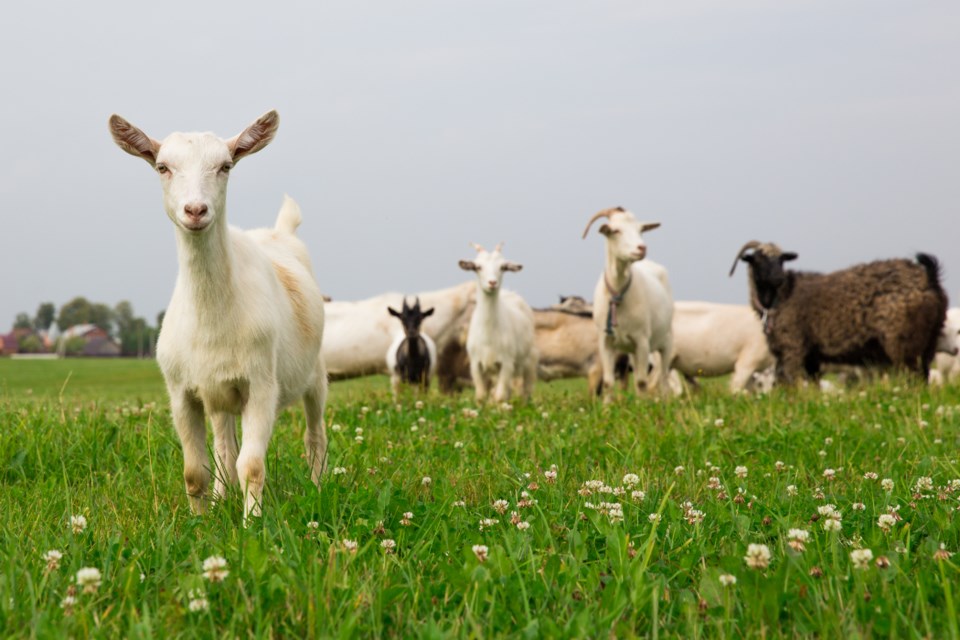Back in the late 1990s, Rob Schill started raising goats on his grandfather’s farm.
Troubles keeping them on the property led to the sale of the herd.
Three years ago, Schill, now president of the Saskatchewan Goat Breeders Association, got back into goats.
“I tell everyone to get your infrastructure first then your goats,” he said in an interview during a workshop at Johnstone Auction Mart. “If water can get through goats can.”
While page wire fences will hold the exploring ruminants, he finds a well-grounded electric fence most effective.
Difficulty keeping goats fenced causes a lot of people to sell out, he said.
The goat industry presents lots of opportunity for meat and dairy in Saskatchewan, says the Balcarres farmer.
A growing ethnic population consumes goat meat. “Eighty per cent of the world eats goat meat — just not in Saskatchewan.
“Goat meat is healthier than other red meat. It’s lower in cholesterol. It’s lower in fat. It’s higher in protein.”
Most goats are sold and slaughtered on the farm. Most are sold at 80 pounds live weight yielding about 40 pounds of lean meat.
JE Ranch at Holdfast has entered the non-ethnic meat market selling goat jerky and meat at farmers’ markets.
The association needs to work with regulatory agencies like Sask. Health on developing a goat milk dairy industry, he said.,
The market for goat milk from lactose intolerant individuals is almost unlimited.
Goat producers are limited to 1,000 litres a week which they must sell themselves. Over that, the milk must be shipped to a processing plant. Nearest processing plants are in Alberta and Manitoba.
About 400 goat farmers with 10,000 animals were counted in the 2016 agriculture census, but Schill says that number dropped last year when drought caused a sell-off of breeding stock.
Prices declined but have recovered to $2 a pound live weight, and he expects $2.50 by March.
“At $2 a pound, you can make money. At $1.50 you can’t.”
The high rate of twins and triplets among goats helps profitability. “If you don’t get twins you cull. I always say the first kid pays the expenses. The second is your profit.”
Goats need specific feed rations. “You can’t feed them like cattle or they die.”
Goat farmers across the province range from those with two or three pets to full-time farms with 750 head.
Schill says the Goat Breeders Association has about 60 members. Membership offers supplier discounts, free ads on the website and newsletter, and workshop discounts.
Most important though is a unified voice for the industry to government and industry. The association was involved in talks developing the new Canadian Agricultural Partnership.
Ron Walter can be reached at [email protected]




